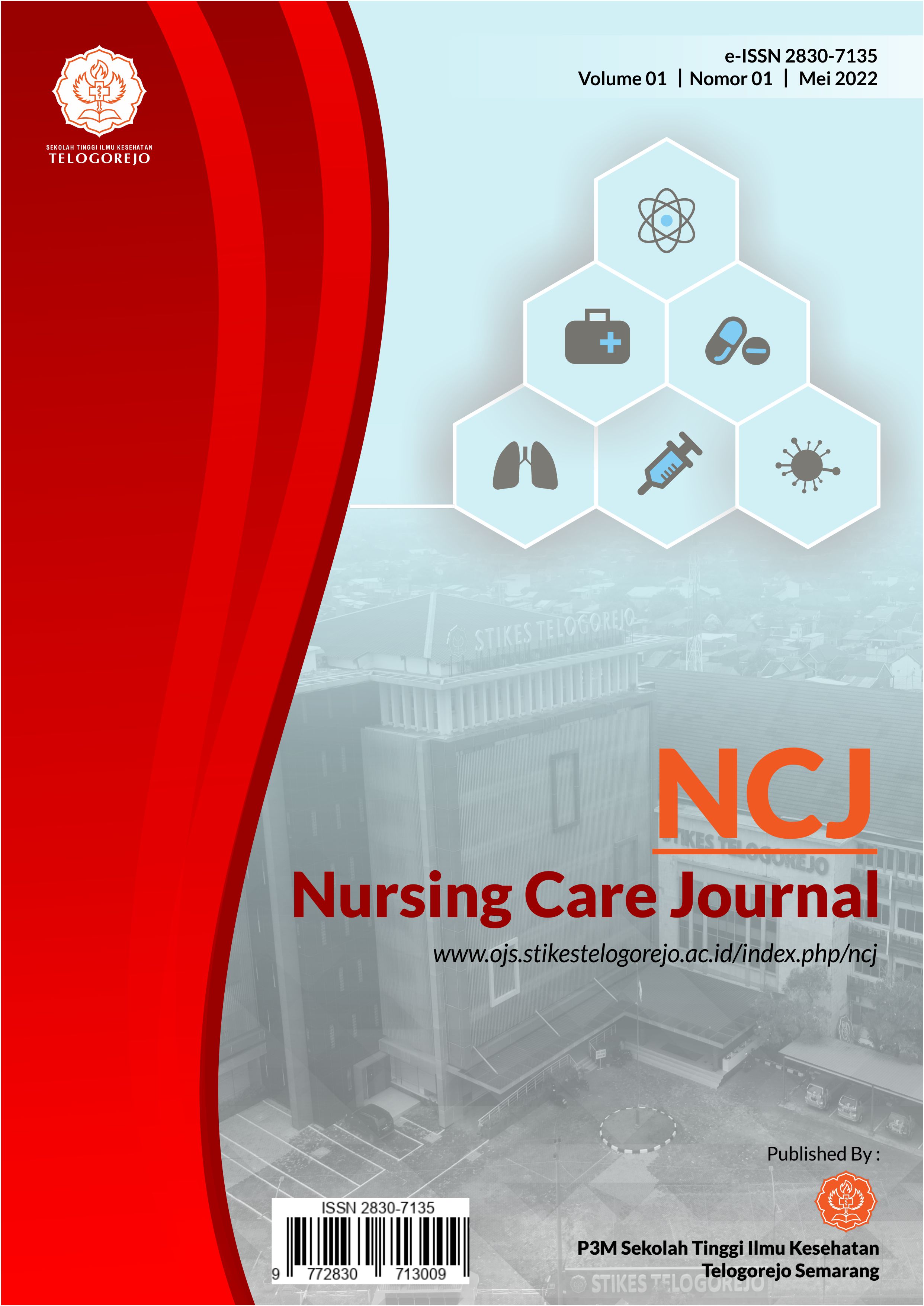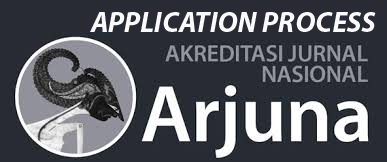Penerapan Posisi Head Up 30 dengan Relaksasi Benson terhadap Penurunan Kapasitas Adaptif Intrakranial pada Pasien Intra Cerebral Hemorrhage (ICH)
DOI:
https://doi.org/10.63520/ncj.v4i1.726Keywords:
Adaptive Capacity, Benson’s Relaxation, Intracranial PressureAbstract
Emergency hypertension is an increase in blood pressure ≥180/120 mmHg accompanied by new or worsening damage to the target organ, and is the main factor in the occurrence of Intracerebral Hemorrhage (ICH). ICH is an intracranial hemorrhage due to a rupture of blood vessels in brain tissue. Based on Riskesdas data, there are around 100 thousand cases of emergency hypertension that have an impact on ICH in Indonesia. Proper management, both pharmacological and non-pharmacological, is very necessary. Nonpharmacological interventions such as 30° head up position and Benson's relaxation can help lower intracranial pressure (ICT). The 30° head up increases blood flow to the brain and prevents an increase in ICT, while Benson's relaxation lowers the activity of the sympathetic nervous system, dilates arteries, and facilitates tissue oxygenation. The purpose of this paper was to analyze the application of 30° head up nursing interventions and Benson relaxation in ICH patients with decreased intracranial adaptive capacity. The results of the study showed blood pressure of 185/95 mmHg, MAP of 118 mmHg, and the results of the CT-Scan showed ICH in the thalamus to the right radial corona. The intervention was carried out for three days and proved effective in reducing ICT. This scientific paper is expected to improve the quality of neurological nursing care as well as understanding and critical thinking skills in handling ICH cases.
References
Ade Lestiani, L., & Putrono, S. A. (2020). Pemberian posisi head up 30° terhadap intracranial pressure (ICP) pada pasien stroke hemoragik di ruang Yudistira RSUD K.R.M.T. Wongsonegoro Semarang [Studi kasus]. Poltekkes Kemenkes Semarang. https://repository.poltekkesmg.ac.id/index.php?p=show_detail&id=21455&keywords=
American Heart Association. (2017). High blood pressure clinical practice guideline for the prevention, detection, evaluation: A report of the American College of Cardiology. Journal of the American College of Cardiology.
Andrian, A., & Wahyuni, H. P. (2023). Perdarahan intrakranial. Jurnal Riset Rumpun Ilmu Kedokteran, 2(1), 150–165. https://doi.org/10.55606/jurrike.v2i1.1064
Anggraini, S., & Chanif, C. (2020). Efektivitas pemberian posisi kepala elevasi pada pasien hipertensi emergensi. Ners Muda, 1(2), 78–87. https://doi.org/10.26714/nm.v1i2.5491
Eka Cahyaningtyas, M., Setyarini, D., Agustin, W. R., & Rizqiea, N. S. (2017). Posisi head up 30° sebagai upaya untuk meningkatkan saturasi oksigen pada pasien stroke hemoragik dan non hemoragik. Adi Husada Nursing Journal, 3(2), 55–59.
Fitzgerald, M., Mackenzie, C. F., Marasco, S., Hoyle, R., & Kossmann, T. (2014). Elevation of the head during intensive care management in patients with severe traumatic brain injury: A randomized controlled trial. Critical Care Medicine, 42(12), 2593–2602. https://doi.org/10.1097/CCM.0000000000000542
Gupta, R., & Piepgras, D. G. (2020). Management of raised intracranial pressure in patients with stroke. Neurology India, 68(Suppl 1), S52–S58. https://doi.org/10.4103/0028-3886.283474
Huang, Y. C., Tsai, C. F., & Lin, C. H. (2018). Nursing interventions to prevent secondary brain injury after stroke: A review. Journal of Nursing Research, 26(2), 85–93. https://doi.org/10.1097/JNR.0000000000000213
Jain, R., & Sharma, S. (2021). Effects of 30-degree head elevation on cerebral hemodynamics and intracranial pressure in patients with acute stroke. Journal of Clinical Neuroscience, 90, 157–162. https://doi.org/10.1016/j.jocn.2021.05.020
Kim, D. H., & Lee, J. H. (2019). The effect of head elevation on intracranial pressure and cerebral perfusion pressure in neurosurgical patients. Korean Journal of Critical Care Medicine, 34(1), 22–29. https://doi.org/10.4266/kjccm.2019.0034
Lang, E. W., Czosnyka, M., & Pickard, J. D. (2001). Effects of head elevation on intracranial pressure and cerebral perfusion: A systematic review. Journal of Neurosurgery, 94(4), 569–576. https://doi.org/10.3171/jns.2001.94.4.0569
Laoh, J. M., Rondonuwu, R. H. S., & Nurain, H. (2023). Pemberian intervensi elevasi kepala 30 derajat pada pasien postkraniotomi dengan masalah keperawatan risiko perfusi serebral tidak efektif menggunakan pendekatan teori Watson di ruangan Intensive Care Unit RSUP Prof. Dr. R. D. Kandou Manado. Prosiding Seminar Nasional, 211–229.
Muttaqin, A. (2018). Asuhan keperawatan klien dengan gangguan sistem persarafan. Jakarta: Salemba Medika.
Smeltzer, S. C., & Bare, B. G. (2010). Brunner & Suddarth’s textbook of medical-surgical nursing (12th ed.). Philadelphia: Lippincott Williams & Wilkins.
World Health Organization. (2016). Asthma fact sheets. https://www.who.int/mediacentre/factsheets/fs307/en/
Downloads
Published
Issue
Section
License
Copyright (c) 2025 Nursing Care Journal

This work is licensed under a Creative Commons Attribution-ShareAlike 4.0 International License.





